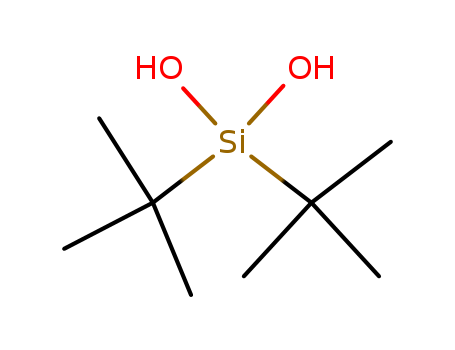- Chemical Name:Di-tert-butylsilanediol
- CAS No.:13321-36-3
- Molecular Formula:C8H20O2Si
- Molecular Weight:176.331
- Hs Code.:
- NSC Number:127083
- DSSTox Substance ID:DTXSID40298949
- Nikkaji Number:J1.794.713C
- Wikidata:Q82041076
- Mol file:13321-36-3.mol
Synonyms:di-tert-butylsilanediol;13321-36-3;ditert-butyl(dihydroxy)silane;di-t-butylsilanediol;NSC127083;SCHEMBL839019;DTXSID40298949;NSC-127083






